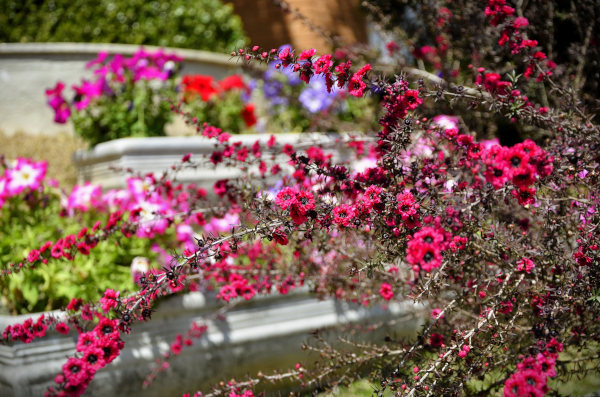How to grow Leptospermum
Hailing mainly from Australia and New Zealand, this member of the myrtle family can be a shrub or tree, and is cultivated for its fine, needle-like evergreen foliage and profusion of showy flowers. These can be single or double, white, pink, or red, and are often produced in such abundance they appear to smother the branches.
Leptospermum is also known by the common names of tea tree – its leaves being the source of the essential oil of the same name. Another common name is manuka. Manuka honey is produced by bees which have gathered nectar from this plant.
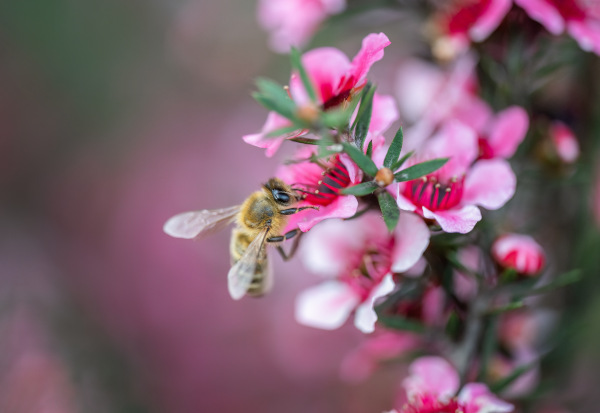
Zantedeschia is a genus of flowering plants from the family Araceae and is native to southern Africa. With a rich history dating back to the Ancient Romans, these deciduous or semi-evergreen perennials have been used as a symbol of celebration. Zantedeschia was Named after Professor Giovanni Zantedeschia, an Italian botanist.
There are two main forms of Zantedeschia: hardy and tender. Hardy forms of the plant can be grown outdoors, enjoy moist soil and full sun or partially shaded conditions - these are known as Arum lilies. Tender forms of Zantedeschia prefer being grown in containers or pots and should be brought inside over the winter - these are known as Calla lilies.
With tuberous flora in all colours from whites, yellows and oranges to deep reds and purples, Zantedeschias are not to be overlooked in any garden, as long as they have sufficient sunlight to grow in.
Ready to learn more about growing Zantedeschia? Read on for all there is to know...

Key Information
Soil pH
Position
Hardiness

Horticultural Divisions-
Species | Hardiness |
Leptospermum scoparium | H3-H4 |
Leptospermum lanigerum | H3 |
Leptospermum grandiflorum | H3 |

Where & when to plant Leptospermum
Position- Full sun is best, though light, partial shade will be tolerated. The shelter of a warm, sheltered wall offers best results.
Soil- Moderately fertile, well-draining soil
Flowering Period- Late spring to midsummer
Hardiness- The most commonly cultivated species range from H3, meaning half-hardy i.e., hardy to between 1°C and -5°C, to H4, meaning hardy to -5°C to -10°C.
If you can offer the protection of a sunny, warm, sheltered wall and live in a mild area (generally the southern half of the UK, and/ or coastal regions), you can try growing your leptospermum outdoors all year round. In these cases, we recommend planting in late spring once all risk of frost has passed. If your plant arrives before this, store in a frost-free environment such as a greenhouse, cold frame, conservatory, or porch until the time is right.
Everywhere else, these plants are best grown in a container to allow for overwintering under cover (i.e., in any of the frost-free suggestions above). Potting into a permanent container is best done in spring. Plants can then be moved outside once all risk of frost has passed. This moment varies from region to region though tends to be during May.
How to plant Leptospermum
- For planting in the garden, dig the soil area removing any large stones and weeds and breaking up any lumps. Mix in some organic matter such as manure or garden compost, and, if your soil is on the heavy side, now is also the time to add a generous helping of horticultural grit. Rake level and firm with your heels. Rake level again.
- Water plants well and allow to drain before planting.
- A good tip is to dig a hole twice the size of the root-ball. Fill with water and allow to drain before placing in the plant.
- Place the plant in the hole, ensuring the top of the root ball sits level with the surface of the soil. Too low and the plant may rot, too high and the roots can dry out.
- Backfill with soil and firm in gently with your foot.
- Soak well with water.
- Mulch around the base with well-rotted organic matter.
- For planting in containers, first choose an appropriately sized pot. The best practice is to start just a few centimetres larger than the rootball and increase in size every year or two. Always ensure there are plenty of drainage holes in the bottom.
- If you are using a large or heavy pot, it can be a good idea to fill and plant it in situ to save yourself the trouble of moving once full.
- Use a good quality potting compost with plenty of horticultural grit mixed in, and, if not already present in the compost (check the description on the bag) some slow-release fertiliser granules.
- Start by partially filling the pot with compost; enough so that when placed on it the upper surface of the root ball is about 3cm lower than the top of the pot.
- Infill all the space surrounding the root ball with compost, firming down with your fingers then adding a little more so the plant is held tight.
- Pick up the container and lightly tap on the potting bench or ground a few times to help further settle the compost around the plant.
- Soak well with water.
- A mulch with horticultural grit will look attractive and help to prevent a ‘cap’ or crust forming on the top of the compost (something container plants can suffer due to the artificial nature of their watering).
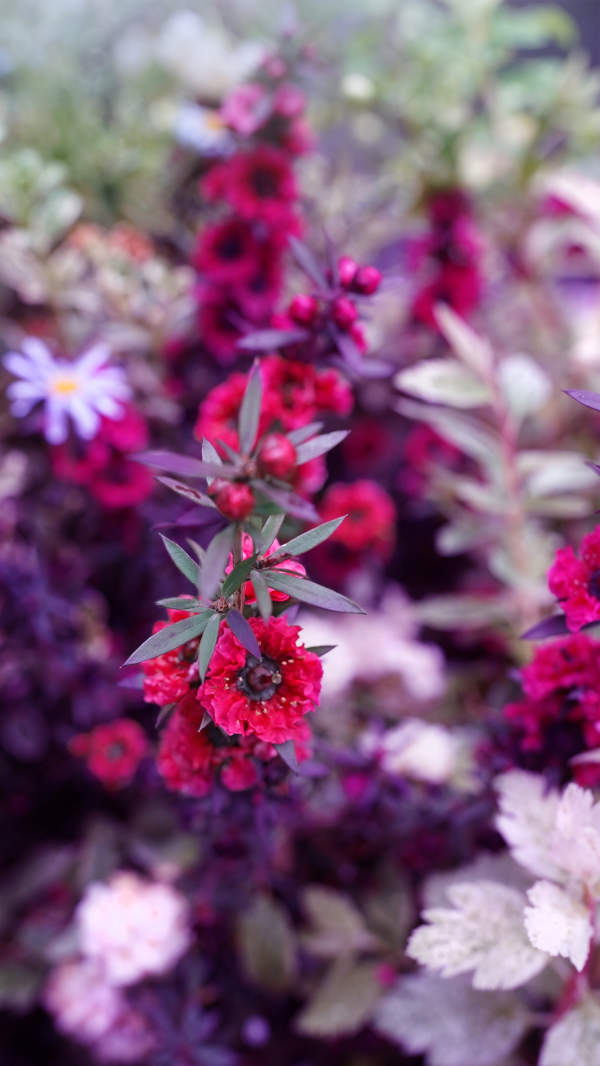
What to plant with Leptospermum
Make this plant feel at home by combining with other southern hemisphere plants such as eucalyptus, phormium, craspedia, coprosma, acacia, hardenbergia, and sollya. These will all thank you for the same warm, protected environment as leptospermum.
If you would like any further planting ideas or growing advice for your leptospermum, please contact our friendly and knowledgeable Customer Care Team - we will be more than happy to help you.
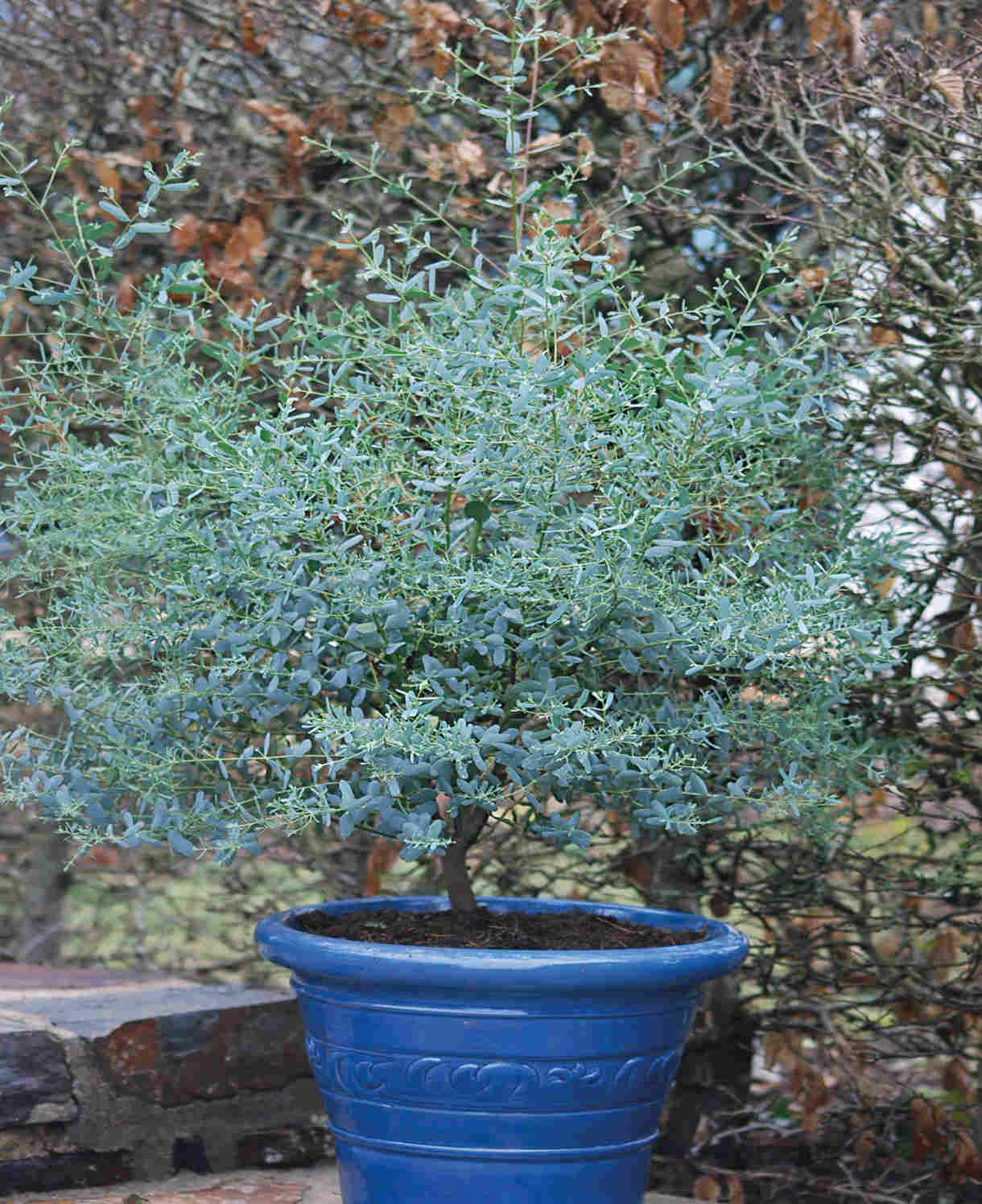

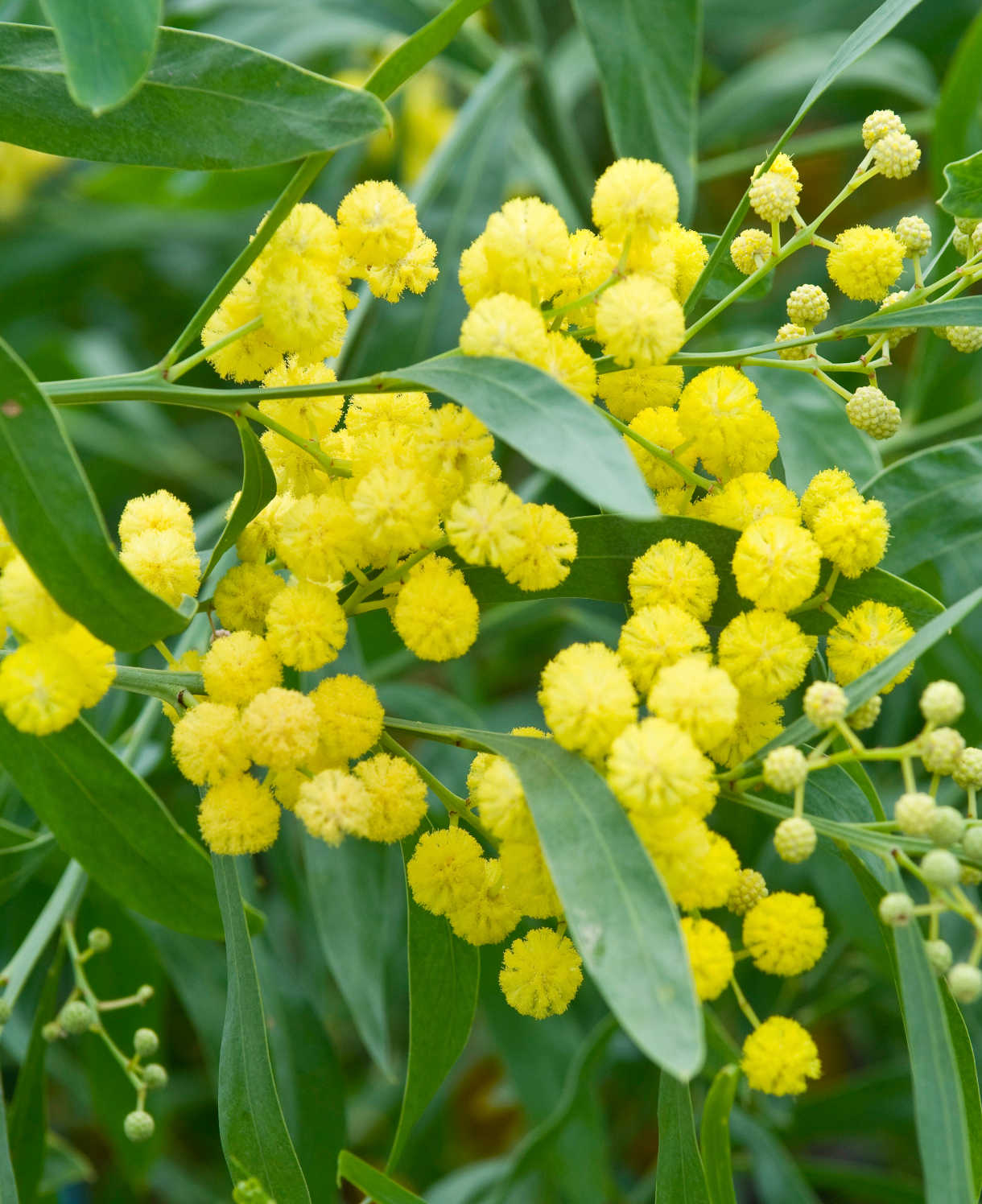
How to care for Leptospermum
Pruning and Deadheading
Leptospermum falls into the RHS pruning group 8.
This means little or no pruning is required, other than removing dead, diseased, damaged, or poorly placed stems once a year. Do this immediately after flowering, and try to avoid removing any more than a third of the plant each year.
Watering
During the first growing season in the ground, a good soaking every couple of weeks should ensure long-term success (aiming for consistently moist, but not soggy soil). After this, leptospermum requires little watering other than in very hot, dry conditions. An annual mulch will help lock in moisture, as explained in our ‘Feeding’ section below.
Container-grown leptospermum needs to be watered regularly throughout every growing season, as its restricted roots have less access to moisture. Allowing the top couple of centimetres of compost to dry out between watering is a useful rule of thumb to help avoid overwatering. Use your finger inserted into the compost to check this. During the cooler months when containers are overwintering indoors, reduce watering to the bare minimum, i.e., just enough to prevent drying out completely.
Feeding
On healthy, fertile soil, an annual mulch of well-rotted organic matter (i.e., a layer of manure or garden compost applied to the soil around the plant) should provide sufficient nutrients for your outdoor grown leptospermum. This has the added benefit of suppressing weeds and locking in moisture. Autumn is the best time to mulch leptospermum, as it also serves as extra insulation to the roots.
For an additional boost (most needed during the first few years in the ground, and/ or when grown in poor soil), applying a general purpose granular feed to the surface of the soil and lightly working in (known as a ‘top dress’) can reap benefits. Aim to do this in spring.
Container-grown plants rely even more on the gardener for nutrition. Get off to a flying start by making sure you use a good quality compost, then throughout the growing season (March to September) apply a liquid feed at regular intervals according to its instructions. Alternatively, top dress with a general purpose granular feed every three months throughout the growing season.
Cold Protection
Most leptospermum are said to struggle beyond around -3°C. As explained above, in milder areas the protection of a warm, sheltered, south-facing wall can be enough to keep them happy, though in colder or more exposed spots it is best to grow them in a container to allow for overwintering indoors.
Move into a frost-free environment such as a greenhouse, cold frame, conservatory, or bright porch sometime around September, then return outside in May or whenever all risk of frost has passed in your area.
Leptospermum comes easily from cuttings, so we recommend taking a few of these each year as insurance – particularly if you are growing your plant outside all year round.
Pests and Diseases
Leptospermum is considered to problem-free in this respect.
How to propagate Leptospermum
Leptospermum is easily propagated by semi-ripe cuttings with bottom heat, best taken in summer.
- Find non-flowered shoots 5-10cm long and snip off the plant.
- Put them in a plastic bag straight away to prevent drying out.
- Fill a container with a compost mix which is at least 50% perlite (or if you prefer, as we do, 100% perlite).
- Trim the end of the cutting to just below a node (point at which leaves grow).
- Remove the lowest third of leaves.
- If the remaining leaves are large, cut them in half with a sharp knife (to reduce water lost through transpiration).
- Insert the cuttings into the compost and water lightly. Several cuttings can be put in the same container if there is enough space to do this without them touching.
- Place in a propagating unit with bottom heat if you have one or covered with a plastic bag on a windowsill or in a greenhouse if not (out of direct sunlight).
- Keep the cuttings misted and occasionally watered until they root. You will know this has happened when roots emerge out of the bottom of the container.
- Gently remove rooted cuttings and pot them into individual pots. Grow on in a cool yet frost-free environment such as an unheated conservatory, greenhouse, or cold frame, until they are large enough to be planted out. Leptospermum grows quite quickly – you can expect fairly beefy plants (i.e., fitting into a 2-3 litre pot) in around 18 months.
* Many plants carry Plant Breeders Rights and cannot be propagated for commercial purposes.
Common Leptospermum questions
- What soil does leptospermum like?
So long as you avoid heavy soil prone to waterlogging, this plant is unfussy when it comes to soil. It is drought tolerant once established, so thin, well-draining soil will be fine with an annual mulch. Regularly improved, humus-rich border soil will be fine too. - Can you grow leptospermum from cuttings?
Yes, this plant is easy and quick to grow from cuttings. See our ‘How to propagate leptospermum’ section above for more information. - Where does leptospermum grow?
In the UK’s climate, this plant grows and flowers best in a sunny, sheltered, warm spot. - Is leptospermum fast growing?
Leptospermum can be expected to reach its ultimate size in 5 to 10 years.
